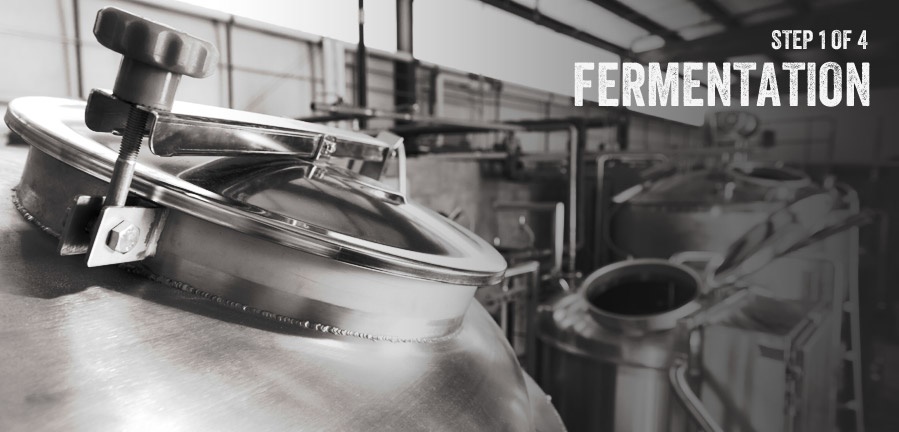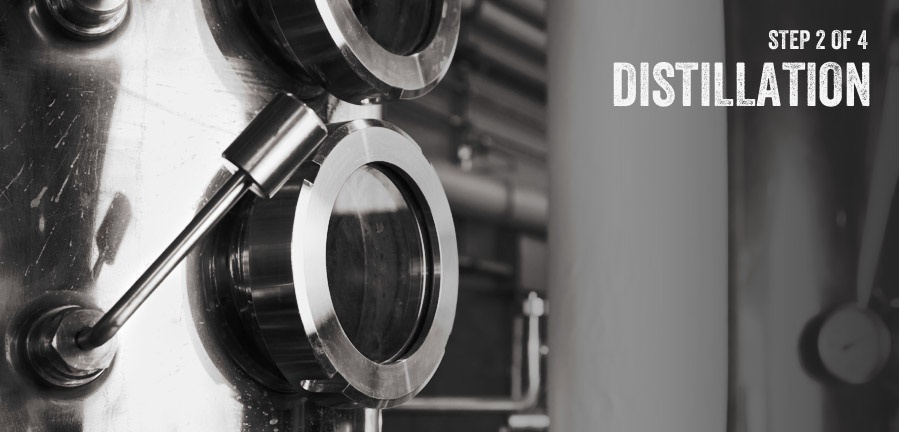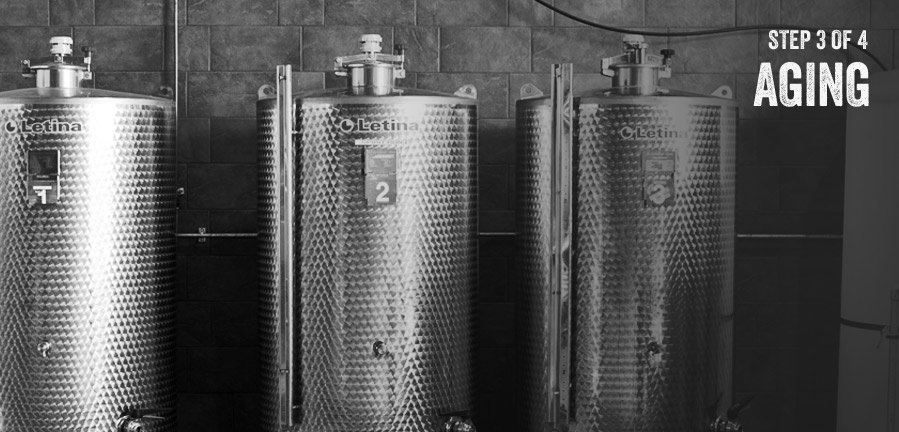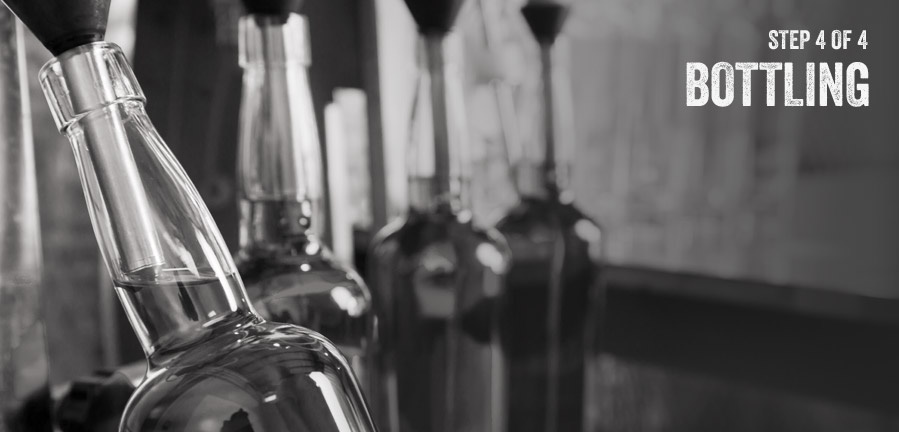
New England White Rum

Our New England White Rum begins with our base ingredients of single origin, Grade A molasses made from fine sugar cane grown in the volcanic soils of a single valley in Guatemala. Our sugar producer was founded by a brother and sister team and is a member of Sugar for Good ensuring a commitment to the environment and pro cane worker standards.
We add this molasses to warm water to mix, then we add cool water to dilute the ‘wash’ bringing the temperature to 74F. We mix in a proprietary blend of yeast selected especially for our New England White Rum. The yeast will eat the sugar during fermentation and convert it to alcohol. As they create these new molecules they also create much of the aroma and flavor in the spirit. Because our New England White Rum is not barrel aged we want to coax out bright, vibrant, layered flavors that bring delicacy to the spirit. After fermentation the liquid is referred to as ‘wash’, and it no longer has any sweetness, it is in fact tart with a pH near 3. It tastes of fresh cut pineapple, passionfruit and brown butter. It finishes fermentation at about 8% abv.
One of the ways we create our own character is to ferment for longer at a cooler fermentation temperature than is typical for rum. Rum was traditionally a quick made spirit that was fermented at around 105 degrees in 24 hours (whiskey is about 5 days at 80 degrees). When yeast are in such a hot environment they may work more quickly, but they also are more stressed, and they may release damaged and unremarkable flavors into the wash when they are stressed. By giving them a perfect home at 74-78 degrees, we allow them to thrive and produce our desired flavors. We also ferment for 6 days. Most of the sugar is converted to alcohol in the first 48 hours, but the mingling of the yeast with the wash after this period, gives richness and complexity to the spirit, just as it does in whiskey, wine and beer. This period also allows a great deal of esterification and further flavor and aroma development.

The New England White Rum is double distilled. The first distillation is done in a pot still. The 8% abv wash is placed in the still and it is warmed up to cause the alcohol vapors to rise, along with the essence of the flavors we created during fermentation. We capture these vapors and it condenses into a liquid we call ‘low wines’. These low wines come out around 35% abv.
We take these low wines and redistill them in the final spirit still. We have a still that allows us to change how many, if any, ‘plates’ we run the still with. What does this mean? It means we can choose to make a light clean spirit with high purity (more plates) or we can make heavy rich spirits with lots of flavor (few plates or pot distilled-no plates). When we do the final distillation on the New England White Rum we run 8 plates to create a bright, ethereal, pure flavor. The vapors are again collected when they condense and we call this liquid ‘spirit’. All spirit off of a still is clear and dry (meaning it has no sugar).

The New England White Rum’s spirit is transferred to stainless steel tank after it is distilled. The spirit is proofed with very soft water in small, slow steps. If the spirit is proofed too rapidly, it can damage or mute some of the flavors. We bring the spirit to 100 proof and let it ripen for 2 months. As the spirit sits in these tanks, slowly but surely the molecules are constantly joining and breaking apart, causing new and more complex flavors to be created. Evaporation also concentrates the deeper (long molecular chain) flavors. As these chains take their time and get longer and longer, the flavors become richer and deeper.

Once the spirit has fully developed its flavor, we do the final proofing of the spirit with soft water bringing it to 80 proof. We then bottle the spirit unfiltered to retain all the flavor and mouthfeel we’ve created. We do not add any sweeteners, mouthfeel agents or artificial rum flavoring essences of any kind. We let the pure spirit speak for itself.




